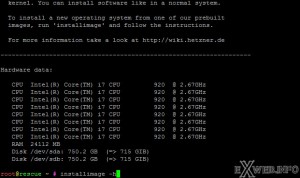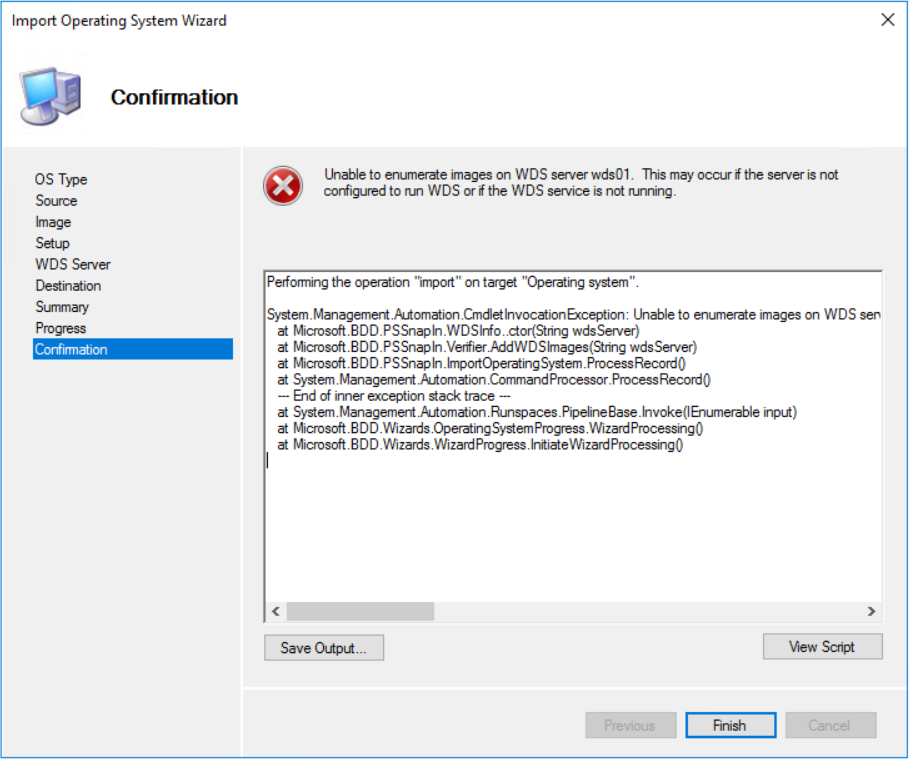

- #Hetzner rescue system install windows Patch
- #Hetzner rescue system install windows full
- #Hetzner rescue system install windows mac
This only got me so far because I then ran into trouble with NetworkManager timing out and not starting.Ī screenshot of the CentOS 7 installer failing (anaconda) similar to what I was seeing.īaffled, I looked into what may have been causing the trouble and discovered that the network was not set up at all and it looked as if no network interfaces existed. I then tried to run the CentOS 7 install as-is.
#Hetzner rescue system install windows Patch
I couldn’t find any files that care about the partition table type, so I didn’t patch anything. I went through the steps up to patching anaconda and then found that anaconda for CentOS 7 is newer and the files are different. I reviewed our notes of what we had done last time, and felt like it was worth a shot even though this time I’m dealing with CentOS 7. Ah ha!Īt this point painful memories of running into this problem before hit me. I looked at the partitions and found the partition table was “msdos”. After rebooting the server and logging in to verify everything, I noticed that the disk space was capped at 2 TB, even though the machine had two 3 TB drives in it (in hardware RAID 1). I followed this process and selected CentOS 7 and proceeded through the whole process without a problem. Hetzner provides a scripted install process that you can kick off after booting the machine into rescue mode. I placed the order for the hardware with Hetzner and then began the procedure for installing the OS. Recently I was given the task of building out a new development server for one of our clients, and we wanted it to be set up identically to another one of their servers but with CentOS 7. They provide good servers for a great price, have decent support, and we’ve been happy with them for our needs. We use a variety of hosting providers for ourselves and our clients, including Hetzner.
#Hetzner rescue system install windows mac
Whereas when you have the subnet (in your case, the /29) you don't have to worry about your MAC address.CentOS 7 on Hetzner server with more than 2 TB disk

Then you'll push traffic from your other VMs through your routing VM (in this scenario).Īs the article explains, if you had a single IP address - it's bound to your MAC address, so you'd need to setup your router VM and purchase a second individual IP bound to the MAC address of the router VM.

ESXi itself cannot route traffic, therefore you need at least two IPs - one for ESXi and one for a VM you'll use as your router (again with pfSense or another routing platform). When ordering a subnet, please make sure to note that it is required for ESXi and should be routed on the additional single IP.What they're writing there is exactly what we've said. To use a subnet (IPv4 as well as IPv6) in ESXi, at least one additional single IP is required as a router VM, since ESXi itself cannot route. These are just a few examples.īut still confused about what Hetzner writes here
#Hetzner rescue system install windows full
This way your VMs would have full network access while having a firewall in the middle. You could also install pfSense or another router OS as a VM, give it an IP, and then route your VMs through that router VM. So in the above example, that's 10.10.0.138. So you'd likely install ESXi and use the first IP address with ESXi. Obviously the above is an example which is using a private range, whereas they'll send you a public one. They may send you something that looks somewhat like this: What IP's do the VM's use and will i be able to connect from the internet.If you get a /29 they'll assign a network block on your port. How does this work if I run a web-server on one VM and other server apps on the other VM. OK, i will be upgrading to a raid version:īut do I understand this correctly, I don't need to buy any additional ip's only subnet /29?


 0 kommentar(er)
0 kommentar(er)
